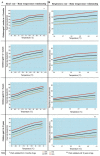Fever in Children: Pearls and Pitfalls
- PMID: 28862659
- PMCID: PMC5615271
- DOI: 10.3390/children4090081
Fever in Children: Pearls and Pitfalls
Abstract
Fever in children is a common concern for parents and one of the most frequent presenting complaints in emergency department visits, often involving non-pediatric emergency physicians. Although the incidence of serious infections has decreased after the introduction of conjugate vaccines, fever remains a major cause of laboratory investigation and hospital admissions. Furthermore, antipyretics are the most common medications administered to children. We review the epidemiology and measurement of fever, the meaning of fever and associated clinical signs in children of different ages and under special conditions, including fever in children with cognitive impairment, recurrent fevers, and fever of unknown origin. While the majority of febrile children have mild, self-resolving viral illness, a minority may be at risk of life-threatening infections. Clinical assessment differs markedly from adult patients. Hands-off evaluation is paramount for a correct evaluation of breathing, circulation and level of interaction. Laboratory markers and clinical prediction rules provide limited help in identifying children at risk for serious infections; however, clinical examination, prudent utilization of laboratory tests, and post-discharge guidance ("safety netting") remain the cornerstone of safe management of febrile children.
Keywords: children; fever; prediction rules; primary care; serious bacterial infection.
Conflict of interest statement
The authors declare no conflict of interest.
Figures


References
-
- National Collaborating Centre for Women’s and Children’s Health . Feverish Illness in Children: Assessment and Initial Management in Children Younger than 5 Years. National Collaborating Centre for Women’s and Children’s Health; London, UK: 2013. - PubMed
Publication types
LinkOut - more resources
Full Text Sources
Other Literature Sources

